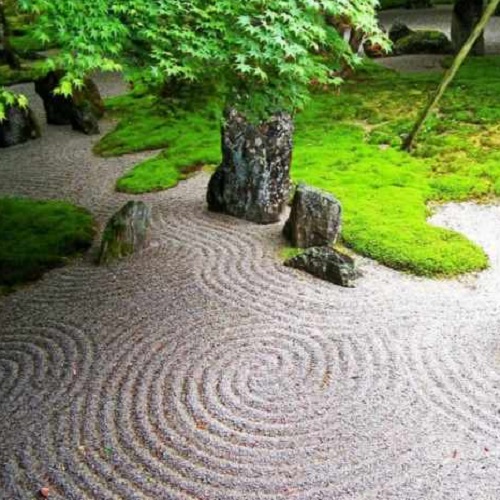Introduction:
One of the most superior powers in the world is spiritual power, no one can resist this. For this reason major researchers, scientists and interior designers wanted to bring new principles and theories from religions.
So here are major religion across the world where interior designers get influence from
- Christianity
- Buddhism
- Hinduism
- Islam
In this topic we will be using Zen Principles, which is from Buddhism. The main principles and theories are related to yoga and martial arts.

Practical Zen principles were launched during the 1960’s with the concept of Shibumi. Which means merging with nature.
Though the concept may look complex, when you understand it with deep heart it’s very simple.
To make the principles easy the concept developers made 7 Zen Principles & theories for a perfect output
Here are the list of seven zen principles, followed by EPS Interior in chennai
- Austerity
- Simplicity
- Naturalness
- Subtlety
- Imperfection which is also known as asymmetry
- Break from routine
- Stillness which can be called as Tranquillity
Austerity:
The Original name is KoKo, which means how absence and omission are very important in the interior designing process. In simple terms the concept explains about space, too much of anything is nothing right.
As an interior designer we must know the importance of empty space. We should not overcrowd the place with products and decorators.
“Refrain from adding what is not absolutely necessary in the first place”
Give some empty space for a better visualization and peace. Always try to limit your decor items. It helps us to reduce the walking traffic. Add decorative wherever needed.
Simplicity:
The original name is Kanso. So in interior designing beauty is different from Utility or functionality. Never overdo the decorative work.
Too many fancy items will spoil the interiors. Just compare kanso with social media platforms.
Instagram and Facebook designs will be very simple but it will attract billions of users because the functionality is very legit comparatively with interior designing try to design the home with simplicity but provide them with lot of functionality
“Eliminate What Doesn’t Matter to make more room for what does”
Architects and interior designers can make use of software or mobile applications for proper space optimization.
The overall output expected from Kanso is Clean, Simple, Neat outcome.
Naturalness:
The Zen name is Shizen, and interior designers must match the design with nature.
The concept needs an equal balance from nature as well as artistic works. Bringing natural lights to the interior designing is an act of naturalness.
Growing plants, microgreens and other indoor plants will bring nature to your home. Rhythm implementation will be great for Shizen.
“Incorporate naturally occurring patterns and rhythms into your designs”
This concept completely eradicates artificial decor inside your home. Implement psychology to your home interiors to bring natural essence.
Subtlety:
Allow people to think about what we have. Because, too much information transfer is not good for a person as well as the interiors. People need to speak about the interiors, let their brain cells think or overdo the art work.
We can give a simple example “Take a product hype, there are two types of product sale.
- Have a normal product, explain about the product with in depth knowledge transfer
- Another product is having an simple product with extraordinary skill
“Limiting information is just enough to pique curiosity and leave something to the imagination”
Imperfection
The zen name is Fukinsei, nature designs the materials in imperfection or asymmetry. In most of the scenarios we would see it as an unfinished design.
The asymmetry designs always trigger the brain cells. So Whenever we see an informal shape, our brain tries to fix the issues and form it as a formal shape.
So imperfection designs might look good but imperfection designs will trigger the brain cell and help us to search for creativity.
“Leave Room for Others to cocreate with you, provide a platform for open innovation”
Spiritual thinking is always a head of scientist & architects research. Even imperfect design needs tons of patience and creativity to make it meaningful.
Apart from the above principles the following two principles are very different. Whereas it’s completely spiritual based.
Break the Routine:
The Zen name is “DATSUZOKU”. Design always changes based on the culture, but there is one more way where design changes based on the time period.
In the first scenario, the culture never changes but in the second scenario the Time changes.
This is the crucial part, because based on time everything changes. We must change the designs based on time. We cannot implement the 1960’s concepts in our millennial people.
“An Interruptive ‘break’ is an important part of any breakthrough design”.
These Zen principles suggest us to break all our routine to bring innovation to the concept. Breaking routine is not an easy process, because we should change the form, shape and texture patterns.
So Break the routine with creativity.
Stillness:
The Zen name is Seijaku, this is the final concept in Zen Principles. This is nothing but bringing calmness and helping us to find creative energy.
If you have visited a 50 to 100 year old yoga place, you will feel the power of calmness, focus, and attention.
“Doing something isn’t always better than doing nothing”
The physical space must reflect our mental state, interior designers can come up with tons of ideas. Even from psychology we can achieve this state.
Conclusion:
As I mentioned earlier, every culture has its own principles and theories. Some are proven and few are not proven. As an interior designer it’s our job to do deep research and help our clients to attain their wisdom in their dream home.
Zen principles are always merged with nature, especially architects and interior designers should bring these concepts into the daily life of the customers.

